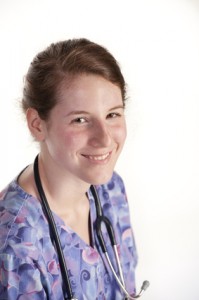
joyfnp/ Fotolia
A new book focusing on American nurses is nominally a book of portraits, intended for coffee tables. But a doctor writing in the New York Times, Abigal Zuker, found the the narrative to be the most affecting part, hitting her “in the solar plexus.”
For example, she appreciated the observation of a hospice nurse named Jason Short in rural Kentucky who has had a number of jobs, including auto mechanic and commercial trucker. He turned to nursing when the economy went under. This pragmatic decision turned into something more, and Mr. Short says he’s a nurse for good. “Once you get a taste for helping people, it’s kind of addictive,” he says in the book, called “The American Nurse.”
The book tells the stories of 75 nurses. Some of them wanted to be nurses from when they were very young, while others took Mr. Short’s more pragmatic approach. All of the nurses profiled exhibit the same “surprised gratitude,” according to Dr. Zuker.
The nurses profiled come from many different health care settings from many different places in America, ranging from large academic institutions like Johns Hopkins to very small places like the Villa Loretto Nursing Home in Mount Calvary, Wisconsin. There are administrators, home health care workers, emergency room nurses, military nurses, and much more.
All describe unique professional paths in short first-person essays culled from video interviews conducted by the photographer Carolyn Jones. Their faces beam out from the book in Ms. Jones’s black-and-white headshots, a few posing with a favorite patient or with their work tools — a medevac helicopter, a stack of prosthetic limbs or a couple of goats.
But even the best photographs are too static to capture people who never stop moving once they get to work. For a real idea of what goes on in their lives, you have to listen to them talk.
Here is Mary Helen Barletti, an intensive care nurse in the Bronx: “My whole life I’ve marched to a the beat of a different drummer. I used to have purple hair, which I’d blow-dry straight up. I wore tight jeans, high heels and — God forgive me — fur (now I am an animal rights activist). My patients loved it. They said I was like sunshine coming into their room.”
Says Judy Ramsay, a pediatric nurse in Chicago: “For twelve years I took care of children who would never get better. People ask how I could do it, but it was the most fulfilling job of my life. We couldn’t cure these kids, but we could give them a better hour or even a better minute of life. All we wanted to do was make their day a little brighter.”
Says Brad Henderson, a nursing student in Wyoming: “I decided to be a nurse because taking care of patients interested me. Once I started, nursing just grabbed me and made me grow up.”
Says Amanda Owen, a wound care nurse at Johns Hopkins: “My nickname here is ‘Pus Princess.’ I don’t talk about my work at cocktail parties.”
John Barbe, a hospice nurse in Florida, sums it up: “When I am out in the community and get asked what I do for a living, I say that I work at Tidewell Hospice, and there’s complete silence. You can hear the crickets chirping. It doesn’t matter because I love what I do; I can’t stay away from this place.”









